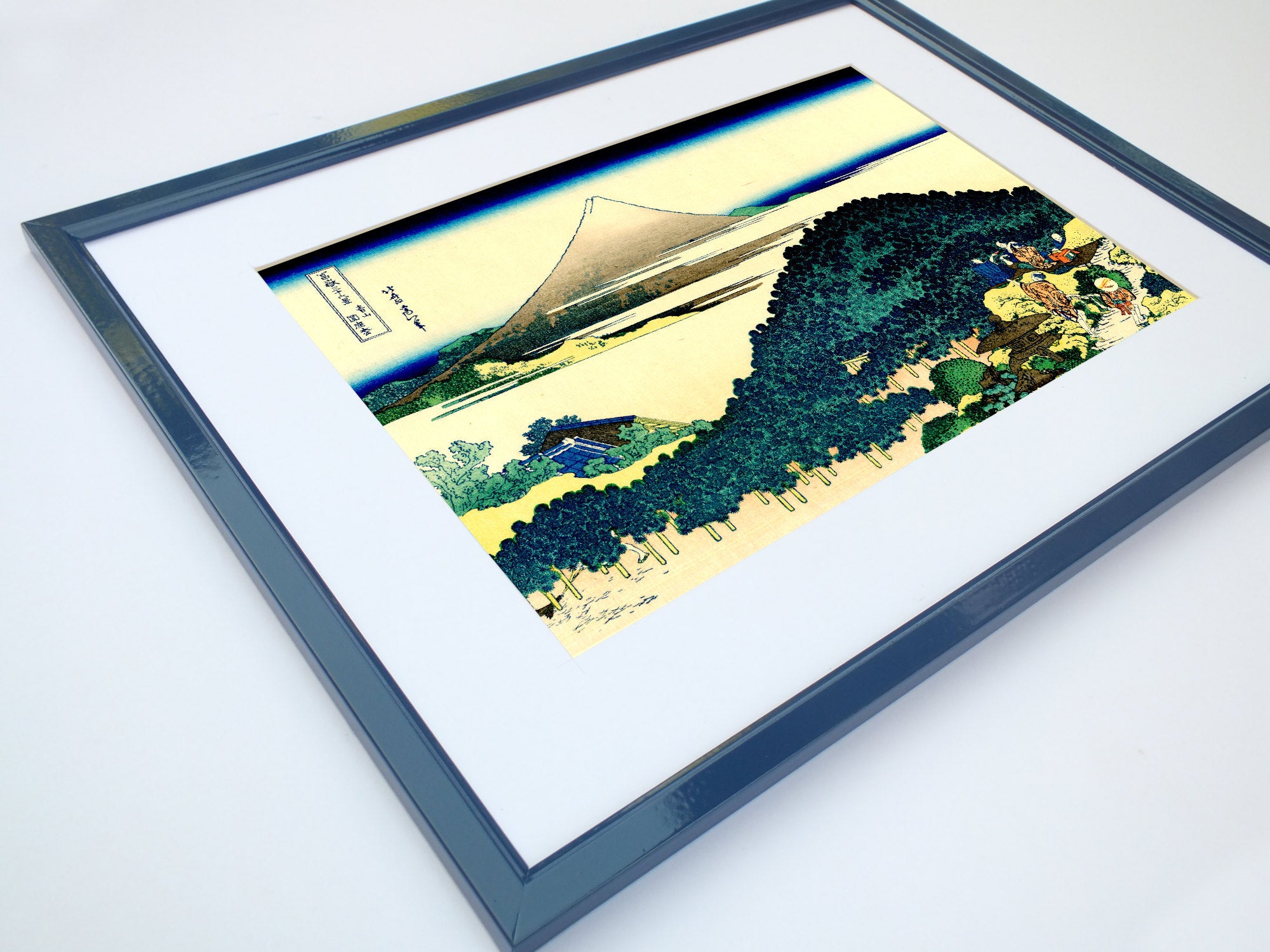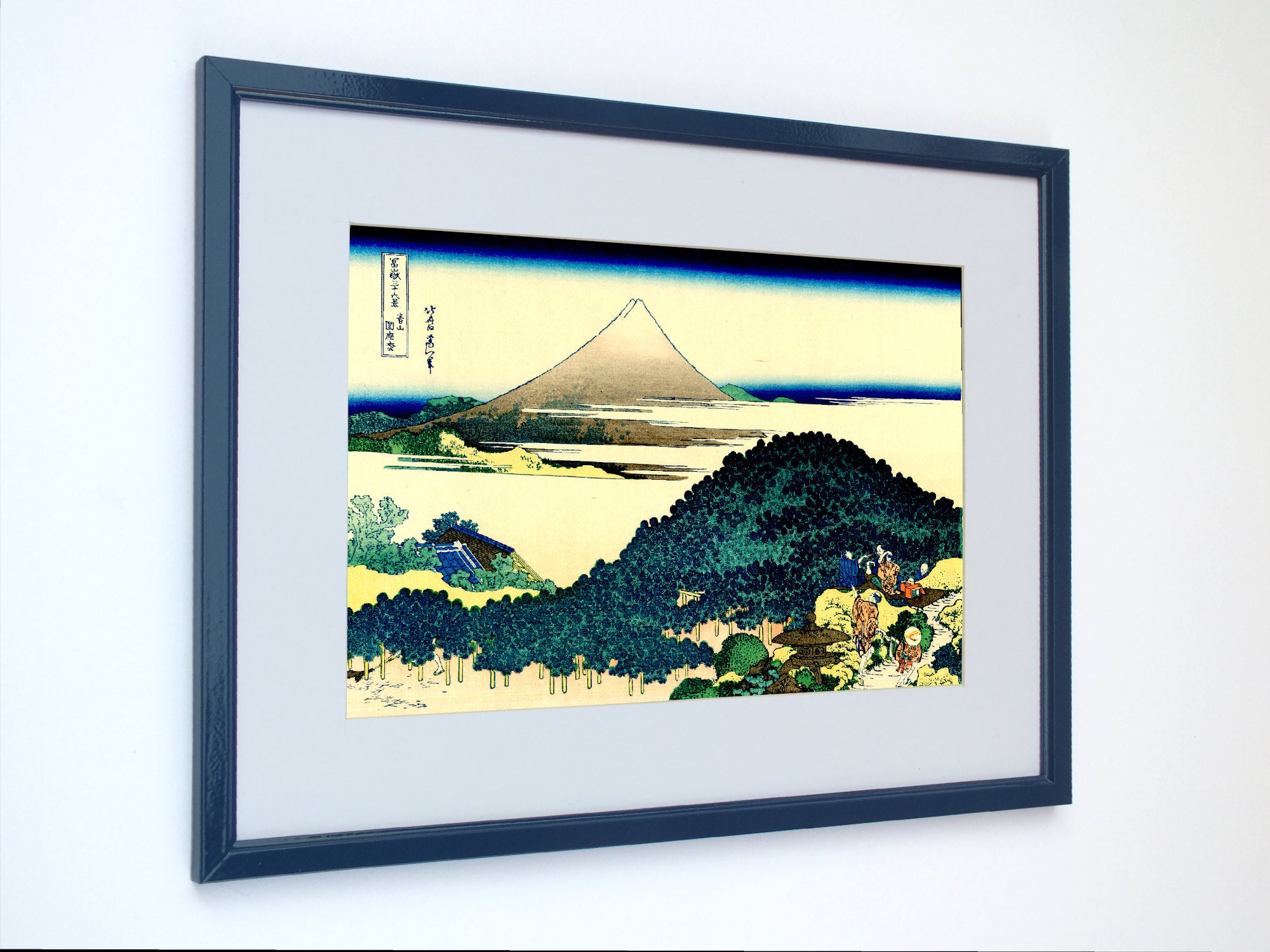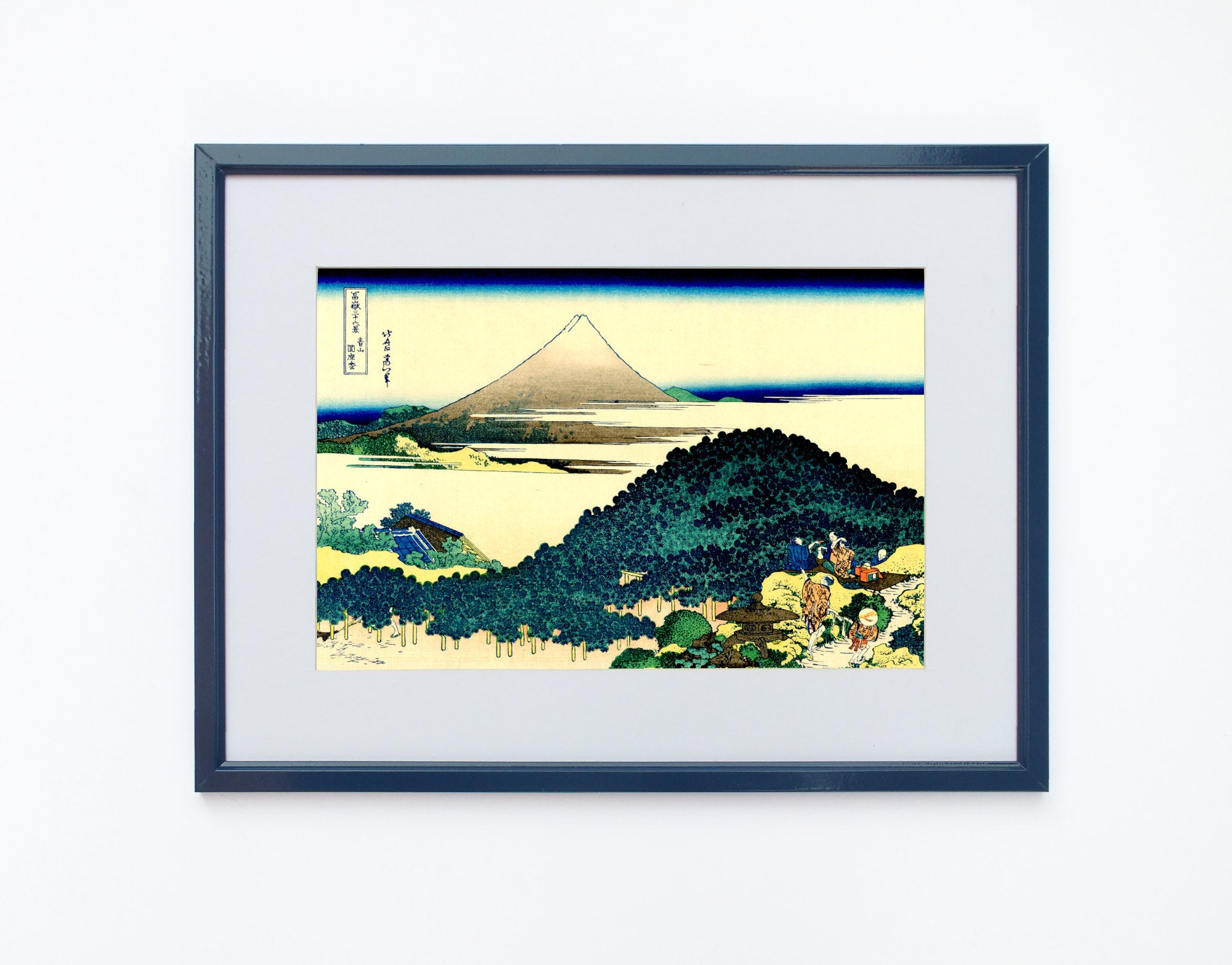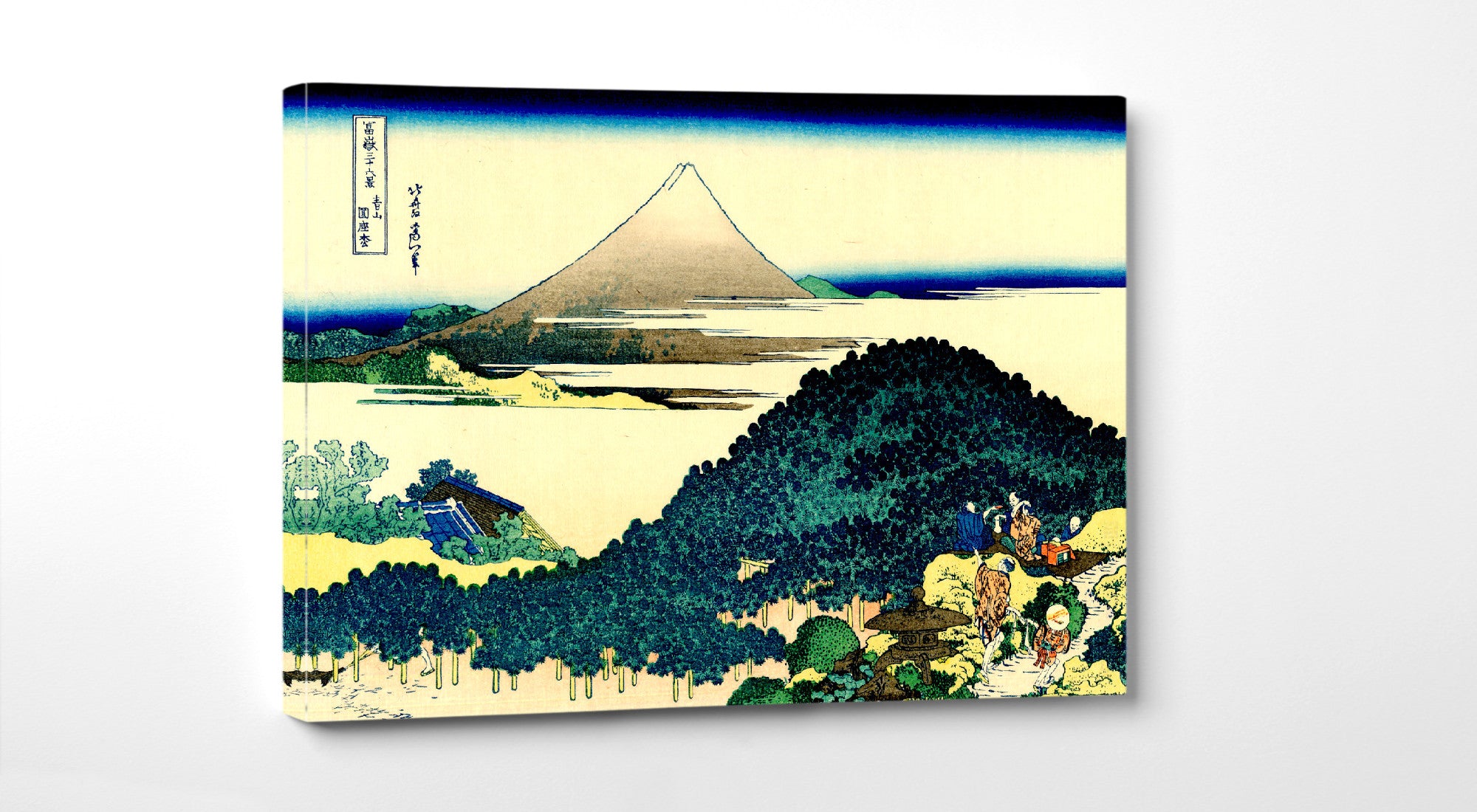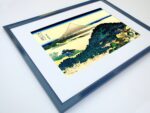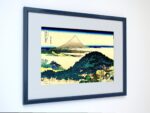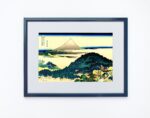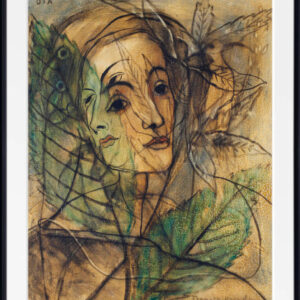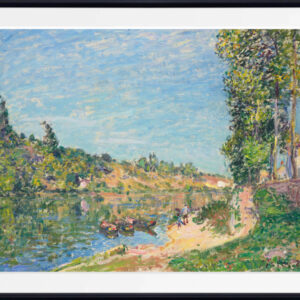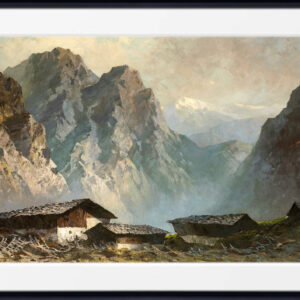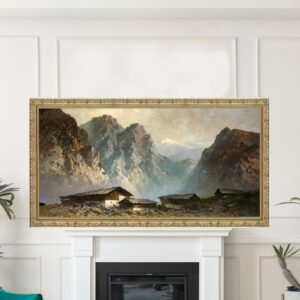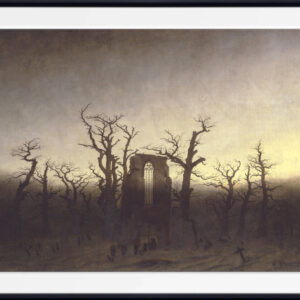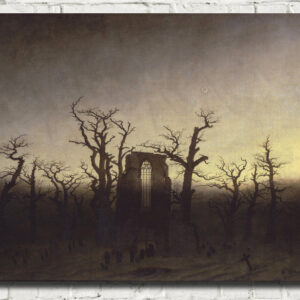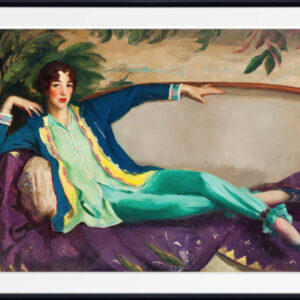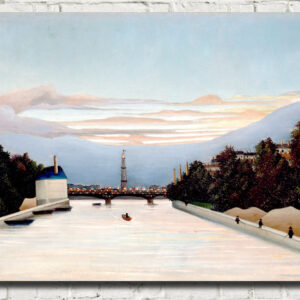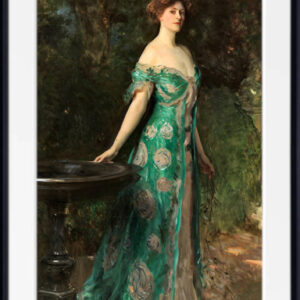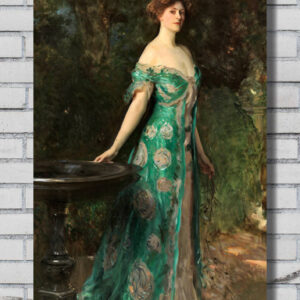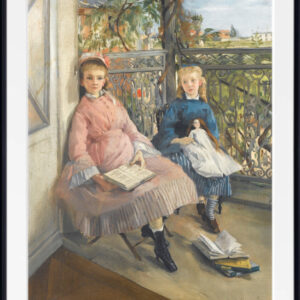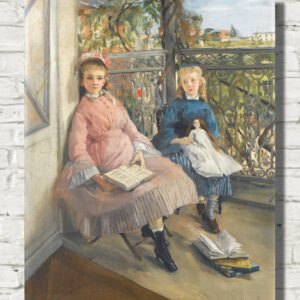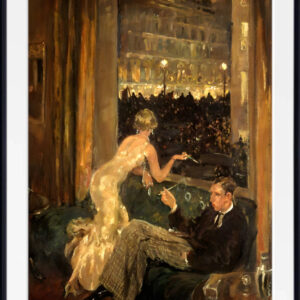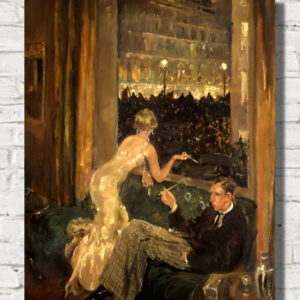36 Views of Mount Fuji, Cushion Pine at Aoyama, Katsushika Hokusai, Japanese Print
Pine trees have outspreading branches that make it appear as a gigantic green cushion. This led to the name cushion pine. Some of its branches were very long and could not hold their own weight as such they were supported by bamboo stilts. Hokusai executed each branch and pine needles in a minute detail. He also placed picnickers in front of the pine. When he combined the Cushion-pine and Fuji, he appealed to the interests of the people. He made sure that he carried the intent throughout his work. He combined Mount Fuji with scenes of known places people had heard or always wanted to see.
This was the secret of Hokusai success in the Mt Fuji series. He was also able to convince a lot of people who would buy the prints. The people bought the prints as a way of viewing volcano. It led to the increase in the manufacturing of travel books such as woodblock prints inspired by interests in travel.
Katsushika Hokusai was a Japanese artist, ukiyo-e painter and printmaker of the Edo period. Born in Edo (now Tokyo), Hokusai is best known as author of the woodblock print series Thirty-six Views of Mount Fuji (富嶽三十六景 Fugaku Sanjūroku-kei, c. 1831) which includes the internationally iconic print, The Great Wave off Kanagawa.
Hokusai created the “Thirty-Six Views” both as a response to a domestic travel boom and as part of a personal obsession with Mount Fuji. It was this series, specifically The Great Wave print and Fine Wind, Clear Morning, that secured Hokusai’s fame both in Japan and overseas. As historian Richard Lane concludes, “Indeed, if there is one work that made Hokusai’s name, both in Japan and abroad, it must be this monumental print-series”. While Hokusai’s work prior to this series is certainly important, it was not until this series that he gained broad recognition.
All prints are made using archival art stocks and UV pigment inks to give up to 200 years life. Choose from unframed, framed and mounted and canvas panel options.

